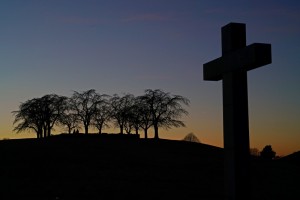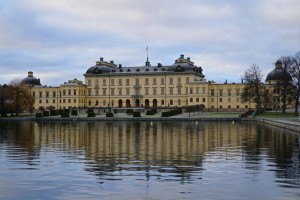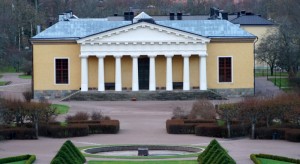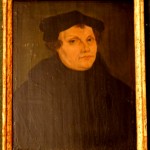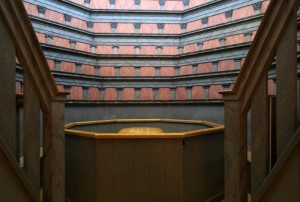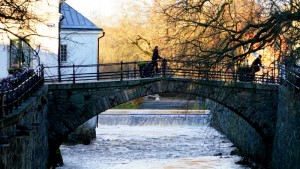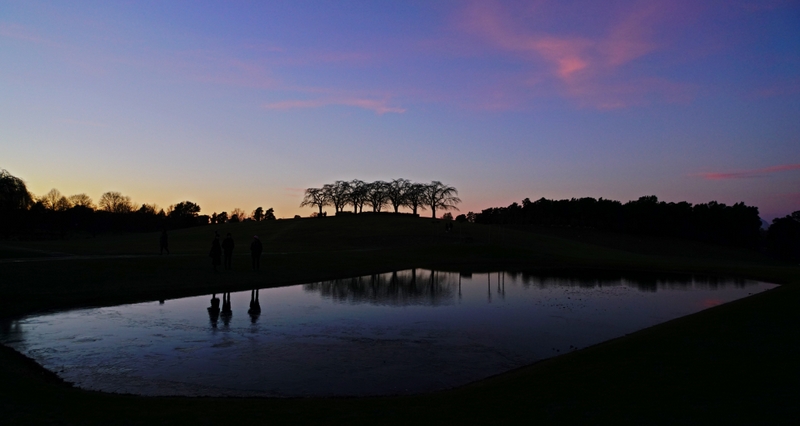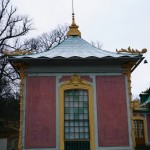Uppsala, Stockholm & Sigtuna
December 10 Thursday: Uppsala
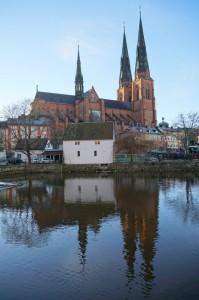 Uppsala located 71 km from Stockholm, is the capital of the Uppsala County and the fourth largest city of Sweden with a population of about 150,000. It is the ecclesiastical centre of Sweden since 1164. Uppsala University founded in 1477 is the oldest university in Scandinavia.
Uppsala located 71 km from Stockholm, is the capital of the Uppsala County and the fourth largest city of Sweden with a population of about 150,000. It is the ecclesiastical centre of Sweden since 1164. Uppsala University founded in 1477 is the oldest university in Scandinavia.
I arrived at the Uppsala train station just before 8:30 am and found my way to the CityStay Hotel close to Uppsala Cathedral. As I had hardly slept on the train, I felt tired and waited at the hotel cafe till I could check in after 11 am.
It was grey, cold and wet. After having a hot shower, I felt slightly better but still had energy to venture outside. Around 4 pm, I finally made a move to go out as I had to get some fresh vegetables and spaghetti to go with the meat ball I had taken with me from Kiruna for dinner. So the day was gone and I went to bed early.
December 11 Friday: Uppsala
I felt better after a good sleep. The blue sky and sunshine cheered me up too. Most of the main attractions are located around Uppsala Cathedral, Uppsala Castle and University of Uppsala, all of which are within ten minutes’ walk from the hotel. I spent over six hours exploring this small corner of the city.
Uppsala Cathedral is Scandinavia’s biggest and tallest church (118.7m). Construction began in the 13th century. It contains the Shrine of Eric IX (Eric the Holy) who was killed by the Danes in 1160 when attending a mass at the church and later became a saint. Kings Gustavus Vasa and Johan III, Carl Linnaeus, Olof Rudbeck and some prominent people were buried here. Before leaving, I saw a notice about a concert at 7:30 pm. Though the tickets had been sold out, the museum shop keeper suggested me return in the evening to see whether I could get in.
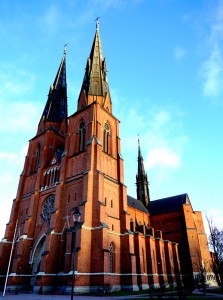 |
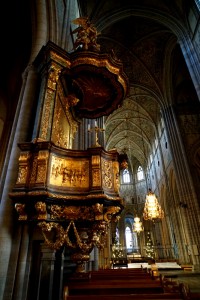 |
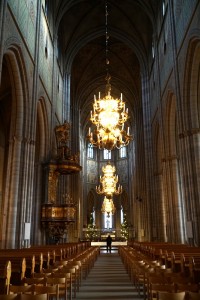 |
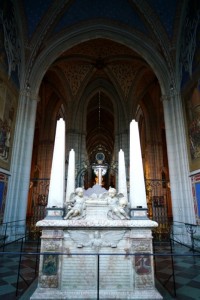 |
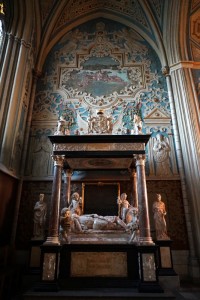 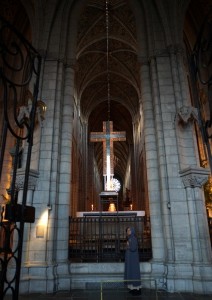 |
An old parish church close to the Cathedral. I was told that the red bricks are original from the Middle Ages but the interior has been renovated many times. A few paintings on the walls and ceiling of a chapel are original dating back to the 14th-15th century.
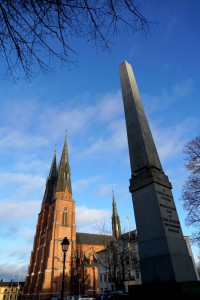 |
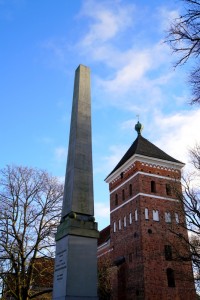 |
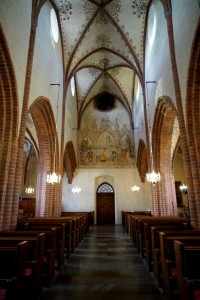 |
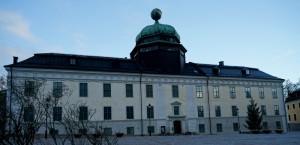 Carolina Redivia, the university library, has a small but excellent exhibition hall. The most precious item on display is the 6th-century Silver Bible made in Ravenna, Italy (the city I visited last month). The oldest piece is a cuneiform script on clay tablet found in the sun god temple at Sippar, Babylonia, 7 B.C. (I think I visited this site in Iraq in 2011). I find the Carta Marina printed in 1539 by Olaus Magnus (1490-1557) and the books by Andreas Vesalius (1514 – 1564) who is often referred to as the founder of modern human anatomy most interesting.
Carolina Redivia, the university library, has a small but excellent exhibition hall. The most precious item on display is the 6th-century Silver Bible made in Ravenna, Italy (the city I visited last month). The oldest piece is a cuneiform script on clay tablet found in the sun god temple at Sippar, Babylonia, 7 B.C. (I think I visited this site in Iraq in 2011). I find the Carta Marina printed in 1539 by Olaus Magnus (1490-1557) and the books by Andreas Vesalius (1514 – 1564) who is often referred to as the founder of modern human anatomy most interesting.
University Art Study Collection in Uppsala Castle has a nice collection of Dutch paintings including the portrait of Martin Luther and his wife Katarina von Bora (1499-1552) by Lucas Cranach (1472-1553), Peasant Wedding by Pieter Bruegel the Younger (1564-1637/38), The Butcher’s Stall by Pieter Aertsen (1505/1508-1575) and Winter landscape by Hendrick Avercamp (1585-1634). I saw a lovely sunset when coming out of the museum.
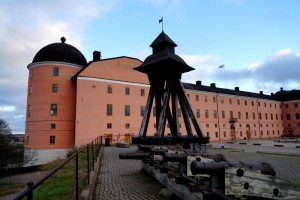 |
 |
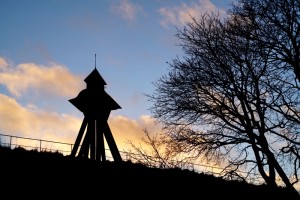 |
Museum Gustavianum (1625) is the university’s oldest building housing interesting collections representing the university and the history of science. It is the first time I see an anatomical theatre used for public dissections between the mid 17th and mid- 18th centuries! I also find some interesting exhibits including a boat grave from 700s, things brought back from Swedish expeditions to Egypt, famous Swedish scholars and scientists including Carl Linnaeus (1707-1778), Sweden’s most famous botanist.
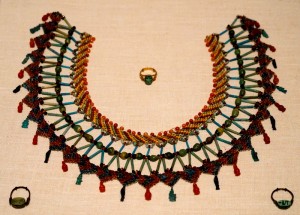 |
In the evening, I paid 100 SEK to get inside the Cathedral for the concert. The Cathedral lit up with lights and candles is most enchanting. Some 200 children and youth took part in an 80-minute long concert in front of an audience of 1000 to 1200. The music is familiar: they sang Silent Night in Swedish. I had a full day. If I had more time, I would like to visit Old Uppsala (Gamla Uppsala) and the house museum of Bror Hjorth, a famous Swedish artist (1894-1968).
December 12 Saturday: Uppsala – Stockholm
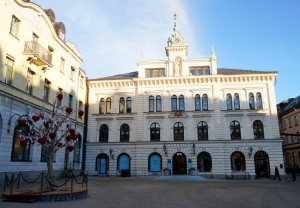 |
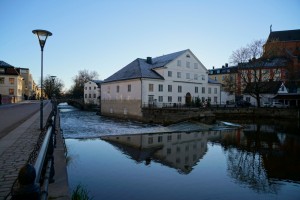 |
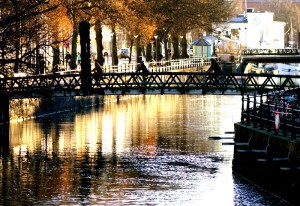 |
I took the 11:26 am train to Stockholm (115 SEK). The City Hostel is within 10 minutes’ walk from the Central Station. It is the best hostel I have stayed with a great location, fantastic ambiance in an old building but modern facilities and a well-equipped kitchen and most helpful staff. I stayed in a female dorm with three nice young girls from Germany, China and Australia.
I ought a 3-day bus pass for 230 SEK. The first place I visited using the card was the Skogskyrkogården (i.e. the Woodland Cemetery), one of the two World Heritage Sites located in Stockholm. Designed by Gunnar Asplund and Sigurd Lewerentz, the cemetery reflects development of architecture from Nordic Classicism to mature functionalism.
By the time I arrived at the cemetery it was already after 3pm. I managed to find the grave of Greta Gabo (1905-1990). It’s atmospheric to walk in the woodland cemetery at sunset. Lit-up candles placed in front of graves on the grass brightened up the place and created a peaceful and serene atmosphere. Before leaving, I walked up a mount where visitors deposit lit-up candle for the deceased.
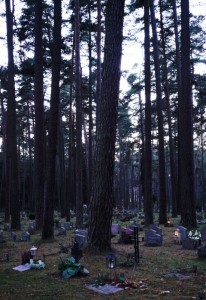 |
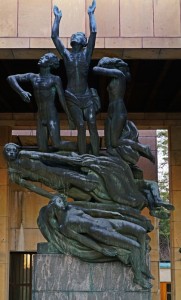 |
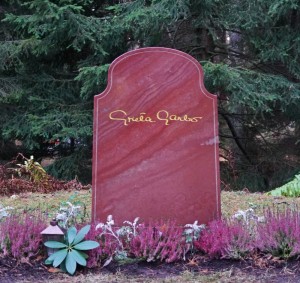 |
I took the metro back to the city and prepared dinner. I had spaghetti, prawns and vegetables. After a delicious dinner, I took a walk. When I passed by the City Conference Center next door, I found many people were in the lobby. There must be a performance in that evening. I found out from the ticket office that only three tickets on the last row for a dance performance ‘Swam Lake’ were still available for SEK 400 each. It’s a bit pricy. Miracle happened. A man told me that a lady standing behind me had a ticket. It turned out that Asa from Uppsala had a spare ticket on the first row as her mom had stomach problem and could not come. Asa sold me the ticket for SEK 400 and I had great fun with her and her three friends from Uppsala.
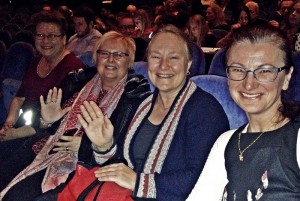 This street version of ‘Swam Lake‘ has nothing to do with the classic ballet. The story is about a few girls who are prostitutes on drug under the control of a pimp. One night, a young man celebrating his birthday got a birthday present of a girl from his friends. He fell in love with the girl (a white swam) and tried to look for her. But the pimp arranged another girl (a black swam) to meet the young man. By the time he discovered he had given the engagement ring to the wrong girl, he was in despair while the girl was heart broken. Eventually he tried to free her from the pimp by aiming his gun at him. But he shot the girl by mistake. What a tragedy!
This street version of ‘Swam Lake‘ has nothing to do with the classic ballet. The story is about a few girls who are prostitutes on drug under the control of a pimp. One night, a young man celebrating his birthday got a birthday present of a girl from his friends. He fell in love with the girl (a white swam) and tried to look for her. But the pimp arranged another girl (a black swam) to meet the young man. By the time he discovered he had given the engagement ring to the wrong girl, he was in despair while the girl was heart broken. Eventually he tried to free her from the pimp by aiming his gun at him. But he shot the girl by mistake. What a tragedy!
The setting is modern and the music, lighting and choreography are fantastic. It is the third time Asa saw it. I am extremely lucky to have run into her and spend a wonderful cultural night in Stockholm.
December 13 Sunday: Drottningholm & Sigtuna
Drottningholm Palace first built on the island of Lovön in the late 16th century and serving as a regular summer residence of the Swedish royal court for most of the 18th century, is a World Heritage Site. Comments from UNESCO on its listing as a World Heritage Site in 1991 are inter alia, “With its palace, perfectly preserved theatre (built in 1766), Chinese pavilion and gardens, it is the finest example of an 18th-century northern European royal residence inspired by the Palace of Versailles”. The palace and its ground have seen many renovations, changes and additions over the past 400 years.
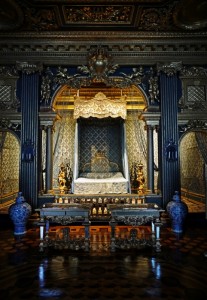 |
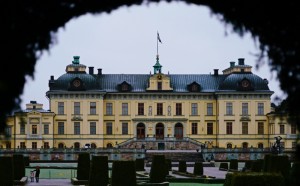 |
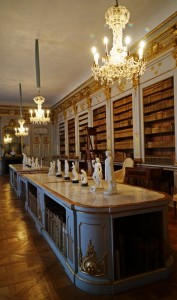 |
The gardens established in stages have resulted in different styles of parks and gardens. The oldest part of the gardens created at the end of the 17th century under the direction of Hedwig Eleonora was later transformed into a baroque garden right outside the palace planked by thick tree avenues and many statues created by the artist Adrian de Vries. The baroque garden was restored in the 1950s and 1960s on the initiatives of Gustaf VI Adolf. The English garden section initiated by Gustav III consists of two ponds with canals, bridges, large open sections of grass, and trees in groups or avenues. The Chinese pavilion was built between 1763 and 1770.
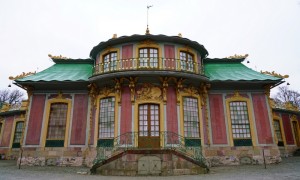 |
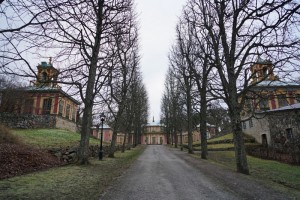 |
Today’s the last date the Palace would be open for visitors. I had to take a metro to Broomplan and then a bus (570 or 575). I arrived before 10:30 am and spent the morning strolling in the expansive garden and see the exterior of the Chinese Pavilion before the Palace opened at noon.
The entrance fee is 120 SEK and I had a guided tour at 12:15 pm. The palace was constructed by commission of Queen Hedvig Eleonora (1636-1715), the de facto first lady of the royal court from 1954 until her death. She was Queen of Sweden from 1654 to 1660, the regent during the minority of her son, Charles XI from 1660 until 1672 and later her grandson, Charles XII when he assumed power at the age of 15 in 1697. The guide emphasised a few times the longevity of the Swedish royal family and peace Sweden has enjoyed for two centuries.
I left the Palace before 1:30 pm skipping a guided tour to the theatre (100 SEK). I had to hurry as I wanted to reach Sigtuna before its Christmas market closed at 4 pm. I returned to the Central Station before taking J train to Märsta. It was about 2:30pm when I stepped off the train in Märsta and was struck by a bright sunset with a reddish orange and golden colours. What is unusual is the appearance of a pinkish column on the opposite side of the sky. The colours deepened while I was on the bus to Sigtuna. I wished I could have taken photos of the amazing colours.
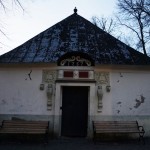 Sigtuna, founded in 970s by King Erik Segersäll, is Sweden’s first town. The history of Sigtuna before the 11th century can be found in the article Old Sigtuna. Today, it is a picturesque medieval town with a population of about 10,000. The church ruins, the abbey, St Mary’s Church, runic stones, the small town hall from 1700s, Stora Gatan (the main old street) and wooden houses draw tens of thousands of tourists a year.
Sigtuna, founded in 970s by King Erik Segersäll, is Sweden’s first town. The history of Sigtuna before the 11th century can be found in the article Old Sigtuna. Today, it is a picturesque medieval town with a population of about 10,000. The church ruins, the abbey, St Mary’s Church, runic stones, the small town hall from 1700s, Stora Gatan (the main old street) and wooden houses draw tens of thousands of tourists a year.
It was after 3 pm when I got off the bus in front of the ruin of St Olaf’s Church probably built in 1100s, St Mary’s Church built in bricks by the Dominican friars during the 1200s and graveyard. The view is awesome. I spent some time lingering in the graveyard and the church.
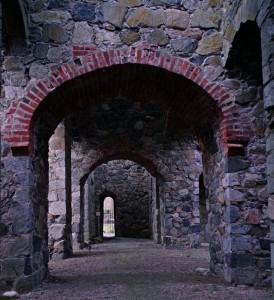 |
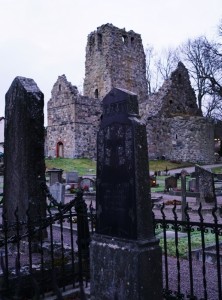 |
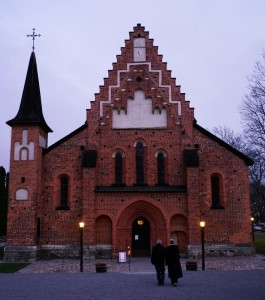 |
I then went to theMain Square and saw the toy-like Town Hall with a large crowd gathering in front of the Christmas tree. Christmas stalls had been set up in the square. People looked jolly and many carried bags of presents for their beloved ones.
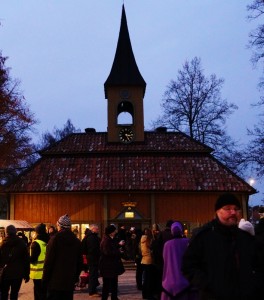 |
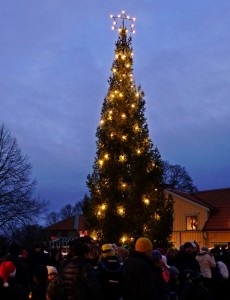 |
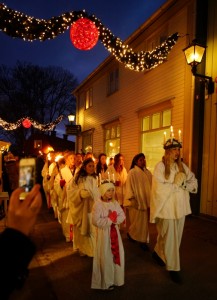 |
While I was walking down the main street, I ran into a group of 20 girls all dressed in white holding candles walking towards the square. It’s Sankta Lucia Day (December 13): she is represented as a lady in a white dress and red sash with a crown or wreath of candles on her head. They were singing in procession with candles in their hands with locals followin them. It’s atmospheric.
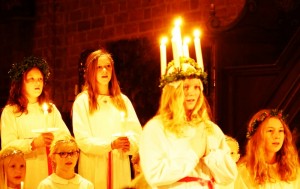 |
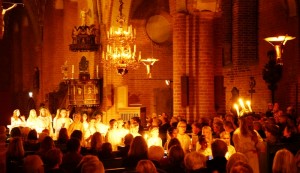 |
I was hungry and did not follow the crowd. Instead, I headed to the stalls at the other end where I treated myself with two large hotdogs. I had a short walk round the lake before returning to St Mary’s Church for the Sankta Lucia celebration. A choir with some 20 children was singing. The jam packed church lit up by candles was lovely and atmospheric.
By the time I came out, most of the stall at the Christmas market had been closed. It was too dark to wander around to see ruins of St Lawrence Church, St Peter’s Church and the Bell Tower. I decided to make my way back to Stockholm.
I arrived in Central Station after 6 pm and went window-shopping. In an upmarket supermarket, I found two fresh scallops on sale for 15 SEK each. I brought them without hesitation and had them steamed. I had a most delicious dinner with scallops and broccoli.
December 14 Monday: Stockholm
I did not leave the hostel till 10 am. I walked along Drottninggaten which leads to the Riksplan where the Parliament House is located. Then I arrived at Gamla Stan (Old Town). I walked to Storkyrkan (the Great Church or Stockholm Cathedral), the oldest church in Gamla Stan and an important example of Swedish Brick Gothic. I must have visited it before but have no recollection of its beautiful interior.
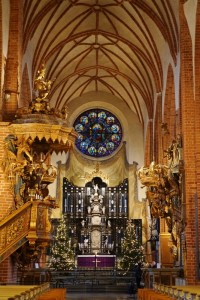 |
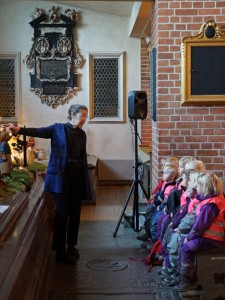 |
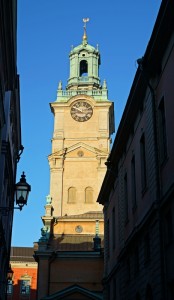 |
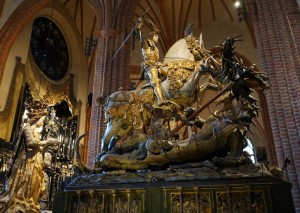 The most famous of its treasures is the wooden statue of Saint George and the Dragon attributed to Bernt Notke (1489). The main altar – “The Silver Altar” – is an impressive wooden triptych with an ebony veneer with sculptured reliefs in silver. There is also a copy of the oldest known image of Stockholm (“The Sun Dog Painting”), a 1632 copy of a lost original from 1535. The monumental pulpit in a French Baroque style and the Royal Pews with a large royal crown forming a canopy above them are the work of Burchard Precht in late 17th and early 18th centuries.
The most famous of its treasures is the wooden statue of Saint George and the Dragon attributed to Bernt Notke (1489). The main altar – “The Silver Altar” – is an impressive wooden triptych with an ebony veneer with sculptured reliefs in silver. There is also a copy of the oldest known image of Stockholm (“The Sun Dog Painting”), a 1632 copy of a lost original from 1535. The monumental pulpit in a French Baroque style and the Royal Pews with a large royal crown forming a canopy above them are the work of Burchard Precht in late 17th and early 18th centuries.
Many groups of kids led by their teachers were touring the Cathedral. I then saw details about a Sankta Lucia concert at 6 pm on the notice board.
Nearby is the Nobel Museum and a medieval square with a small but picturesque Christmas market. The old town is well-preserved with lots of old buildings which are now turned into souvenir shops, cafes and restaurants. I am glad to find some studios and companies still remaining in the area. By noon, I was cold and hungry. I therefore had a buffet lunch in an Italian restaurant for 105 SEK. It seems to be a popular place for locals. Though one can eat as much as one likes, no one seems to take more than three moderate helpings. This explains why most Swedes are not over-weight!
Then I walked to Riddarholmen where most of the buildings are related to the administration of justice. I am interested in the Riddarholmen Church established in the late 13th century and later became the burial sites of Swedish kings and queens. But it only opens between September and November.
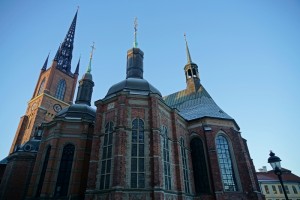 |
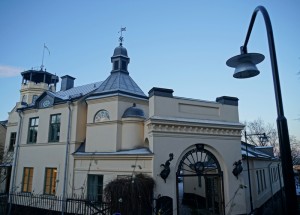 |
I crossed the bridge and walked along the roads between Söder Märarstrand and Hornsgatan on Sodermalm. The views across Riddarfjärden where the Town Hall and other colourful houses are located is picturesque. I strolled aimlessly till I arrived at Hornshull. It was getting dark and I jumped onto Bus 66 heading to Sofia (I do not know where it is!) After a nice 20-minute bus tour, I jumped off and took the metro at Medborgarplatsen to return to Central Station.
 |
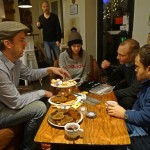 It was 3:50 pm when I stepped into the hostel. The receptionist told me about a candle making session in the cafe at 4pm. I joined with delight! We were treated with glögg (typical hot wine for Christmas) and ginger biscuits. I left the hostel before my candle took shape as I did not wish to miss the 6 pm concert in the Cathedral. Jiang, a room mate from Mainland China doing her PhD in Madrid, was interested and joined me. Jiang was in Iceland while I was in Abisko and in Abisko and Kiruna from December 8 to 12. She had bad weather in Iceland and had only seen display of Northern Lights in Abisko and Kiruna on December 11 and 12 respectively. I could appreciate her frustration. Anyway, it was not easy to see good display of Northern Lights from November 20 to December 12 owing to the weather. That’s life!
It was 3:50 pm when I stepped into the hostel. The receptionist told me about a candle making session in the cafe at 4pm. I joined with delight! We were treated with glögg (typical hot wine for Christmas) and ginger biscuits. I left the hostel before my candle took shape as I did not wish to miss the 6 pm concert in the Cathedral. Jiang, a room mate from Mainland China doing her PhD in Madrid, was interested and joined me. Jiang was in Iceland while I was in Abisko and in Abisko and Kiruna from December 8 to 12. She had bad weather in Iceland and had only seen display of Northern Lights in Abisko and Kiruna on December 11 and 12 respectively. I could appreciate her frustration. Anyway, it was not easy to see good display of Northern Lights from November 20 to December 12 owing to the weather. That’s life!
Both of us enjoyed the concert which was mainly attended by the parents of the children’s choir. I guess over 20 children took part: many of them are very young and cute. Another enjoyable Swedish Christmas experience!
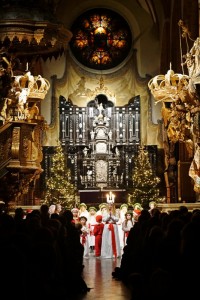 |
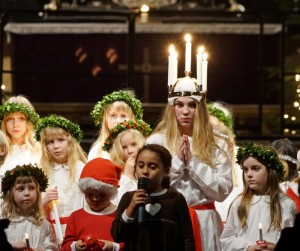 |
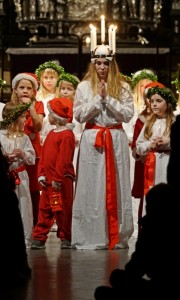 |
Both Jiang and I are interested in the Fotografiska (The Swedish Museum of Photography) which opens from 9am to 11pm. There are several exhibitions including “Up Close” by Martin Schoeller, a renowned portrait photographer. I am however more interested in “Avant Garde” by Guy Bourdin (1828-1991), a French photographer who is considered one of the best known photographers of fashion and advertising of the second half of the 20th century.
There is also a small scale exhibition – “Where the Children Sleep”- by Magnus Wennman/Aftonbladet showing helpless children who have lost their parents and home owing to wars and conflicts. We live in an insane world. What can they as well as we do to change the world? I am lost too! Before returning to the hostel, Jiang took me to see decorations in a few MTR stations which have been painted in blue and white, red or green based on the colour of different lines. She returned to the old town while I went back to the hostel before 10 pm after a long and full day.
December 15 Tuesday: Stockholm, Sweden (GMT+1) – London, UK (GMT)– Taunton: Travel Day
I departed the hostel at 10 am for the airport though my flight would not be leaving till 3:20pm. With my 3-day bus pass, I took J train to Märsta and then a 10-minute bus ride to Arlanda Airport. I arrived at 11:20 am. I spent a few hours in the lounge having a light lunch and uploading photos to my website. The plane took off on time and I was in London before 5 pm (local time).
Remarks
I have spent a week in Northern Sweden in Abisko and Kiruna and another in the south exploring Uppsala, Sigtuna and Stockholm. My week in the Swedish Lapland gives me a taste of winter experience in the Arctic Circle which is surprisingly pleasant.
First, this year’s weather was fairly mild with temperature in Abisko hoovering around zero in early December. The first heavy snow fall came the second day when I was in Abisko. I enjoy watching the snow and wandering aimlessly in the snow. Being warmly cladded with a few layers of clothes, hat, gloves and boots, I find the cold weather surprisingly bearable.
Second, though areas north of the Arctic Circle do not have sunrise from early December, it does not mean the people are living in darkness. Reflections from snow, the way the Scandinavians use light and candles to brighten up their home as well as public areas have brought life, light and beauty into a white world of snow.
Third, I have been captivated by the polar lights. The fast changing colours between 8 am to 2 pm showing different shades of pink, purple, orange and golden colours are fascinating. I find these sublime colours more interesting and lovely than the glaring colours of sunrise and sunset in lower latitudes.
Fourth, Abisko is truly an excellent spot for viewing Northern Lights on a clear night. But the weather is unpredictable and can change every minute. I saw the lights on seven nights (two in Norway and five in Sweden) with three reasonably good display in Abisko.
Fifth, I like Swedish Lapland. One day I shall return to Abisko National Park in late late August to early September for an autumn hike along the King’s Trail for the foliage and Northern Lights.
I like Scandinavia as a whole. Descendants from the Vikings, the Scandinavians are tough and independent with their culture, history and way of life. In 2015, I spent a total of 73 days in Denmark and Greenland, Finland, Norway and Sweden. Despite the high cost of living, I still find good values for what I have paid for my Nordic experience: each country is different but equally enjoyable.
After spending two weeks in Sweden at leisure, I have discovered the heritage, splendour, stylishness and beauty of Sweden which boasts 15 World Heritage Sites. I have only visited three so far and look forward to seeing the rest in the coming years.
I have been to Stockholm a dozen times for work but never had time to explore it. During my recent stay, I enjoyed strolling around aimlessly and soaking in the atmosphere. I am impressed by the public transportation system and find so much to do and see. Stockholm has become one of my flavourite European capitals: it is elegant, not too touristic and overcrowded. I shall return to visit Birka, the Viking City – Stockholm’s third World Heritage Site, its museums and interesting neighbourhoods in the city.


